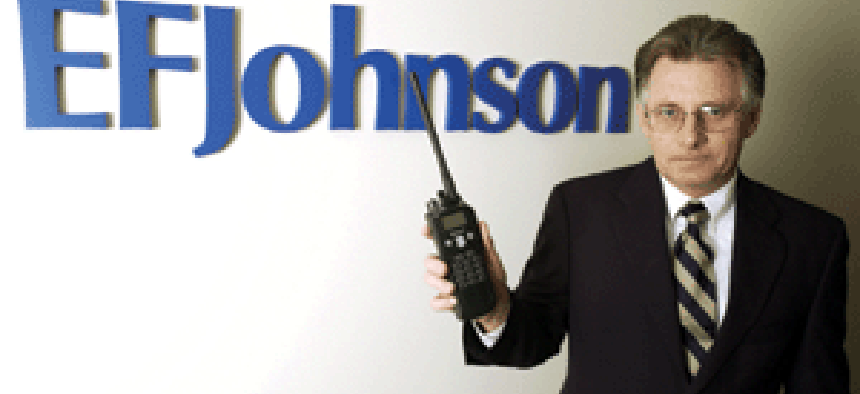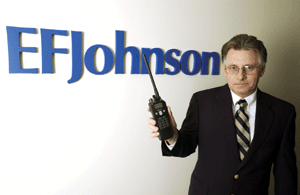Can you hear me now?

The Project 25 open standard for interoperable radio systems is gaining momentum in the government market.
The Project 25 open standard for interoperable radio systems is gaining momentum in the government market.The Treasury Department is preparing a request for proposals for a $1 billion contract that will call for Project 25 radios to be used in all its offices. In New York, state officials are evaluating bids on a 20-year, $400 million Statewide Wireless Network project that calls for Project 25 interoperability; the winner will be announced this month. And at a first-responder trade show last month in Indianapolis, companies such as EFJ Inc., M/A-Com Inc. and Motorola Inc. were hawking their Project 25-compliant radio systems.For the integrators supporting first responders, the acceptance of Project 25 by once-reluctant vendors is good news. That's because the standard allows them to pick the best components for agency systems, rather than being locked into one company's product line. "At first, each company had its own proprietary radio design. You could not mix and match. Project 25 allows that," said Jim Ridgell, vice president of the federal business unit of EFJ's two-way radio subsidiary, EF Johnson. However, industry officials also said Project 25 still is a long way from completely solving the interoperability problem. It offers no guidelines for how radios of different frequencies can communicate. Nonetheless, Project 25 is taking hold in the marketplace. "The federal government has several agencies that require Project 25, and there are many state and local contracts that require it as well," said Wayne Leland, chair of the private radio section of the Telecommunications Industry Association, a trade association for the communications and information technology industries.The problem of interoperability becomes widely apparent any time a major disaster occurs. When ambulance, fire trucks, police and federal agencies converge on the scene, often they find their radios can't communicate with one another. Part of the problem surrounding interoperability is the radios use different frequencies to communicate, said Mike Barney, director of system engineering for business development and sales for the Decision Systems division of General Dynamics Corp., Falls Church, Va. Many radio systems operate on the 800 megahertz band, while others operate on frequencies ranging from 30 megahertz to three gigahertz. Radios that do operate on the same frequencies often don't work together, either. The trunked radio systems that became popular in the early 1970s because they used the airwaves more efficiently are often proprietary systems. MOVING FORWARDInteroperability was the problem the Association of Public-Safety Communication's Officials, a group of radio manufacturers, vendors and users, set out to address when it started Project 25 in 1989, said Craig Jorgensen, who leads the its Project 25 committee. According to the Project 25 statement of requirements, the standard, first published in 1995, was created to more efficiently use the radio spectrum by facilitating communications through an interconnectable, narrow-band, digital protocol. Initially, companies making and selling radio systems were reluctant to embrace the standard. They invested heavily into developing and marketing their own trunked solutions. Re-engineering systems to meet open standards would only allow competitors to offer replacement equipment, potentially driving down sales. What turned the tide was that clients started demanding Project 25.For instance, in a 2002 filing with the Securities and Exchange Commission, Lincoln, Neb.-based EFJ highlighted Project 25 as a major part of its sales strategy. The document said, "Several of the U.S. government agencies ... have specified a Project 25 requirement for procurements of new LMR equipment." Project 25 got a big push when the National Telecommunications and Information Administration, which oversees government radio communications, set a requirement in 2001 for agencies to switch to narrow-band communications by 2008, preferably through Project 25.State and local agencies are also showing interest. APCO estimated there are approximately 30,000 emergency response agencies in the United States. The Homeland Security Department recently established the SafeCom initiative to help these agencies unite on a single set of interoperability standards, although many first-responder organizations are banding together already."A lot of organizations will form regional [oversight] boards to set policy and do the procurement," said Chuck Jackson, vice president and director of the North American group for Schaumburg, Ill.-based Motorola, pointing to regional boards in Minneapolis and San Diego. Such regional authorities are more likely to specify Project 25 equipment as a way to standardize across many different first-responder units, Jackson said. HEALTHY SUPPLEMENTDespite the high adoption rate of Project 25, the interoperability problem is far from solved. For instance, even with Project 25 compliance, radios in the 800 megahertz range will not respond to radios operating in other frequencies, Jackson said. Yet issuing the same radios to all responders will not solve the problem, Barney said. An 800 megahertz-based radio works well in urban environments, because it can penetrate buildings. In contrast, a police department in Texas would be served better by a very high frequency, or VHF, radio system that can provide much wider coverage in areas with little obstruction, Barney said. Several companies sell hardware that converts the calls from one frequency to another, allowing responders with two different systems to communicate. However, too many different radio systems on one channel during emergencies would clog the air time and may block out important calls, he said. Agencies are hiring integrators to set up infrastructures that can coordinate all the calls coming through. An integrator could look at centralized call centers to help route the traffic, as well as provide alternative methods of communication, such as pagers, Barney said.Lowell, Mass.-based M/A-Com's new Project 25 product line emphasizes Internet protocol connectivity as way for integrators to help solve some of the issues, said Paul May, business development manager for M/A-Com. Project 25-complaint radio systems don't enhance interoperability "if your neighbors are still running analog systems," May said. An IP-based trunked system allows different frequencies to mingle on the same backbone.Using IP for land mobile radio is also attracting the attention of Cisco Systems Inc., San Jose, Calif."We anticipate that end users will migrate towards IP," said Donna Rhode, director of product strategy for the government services unit. For the U.S. Forest Service, Cisco is participating in a pilot project to equip regional interagency dispatch centers, so the centers can connect with other agencies when a disaster such as forest fires strikes. "Replacing all the radios and creating a completely interoperable network is something we need to move toward, but it is a ways out there, so we're trying to understand how we can leverage the existing infrastructure," said Shannon Nix, a senior customer solutions manager for Cisco's government systems unit. *Staff Writer Joab Jackson can be reached at jjackson@postnewsweektech.com.


"At first, each company had its own proprietary radio design. You could not mix and match. Project 25 allows that." ? Jim Ridgell of EF Johnson
Henrik G. de Gyor
NEXT STORY: DHS prepares for mission